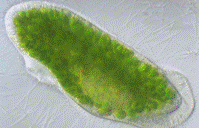Biological Sciences, School of

School of Biological Sciences: Faculty Publications
ORCID IDs
https://orcid.org/0000-0001-9847-2185
Document Type
Article
Date of this Version
2020
Citation
Microorganisms 2020, 8, 1641; doi:10.3390/microorganisms8111641
Abstract
Ubiquinones (UQ) are intrinsic lipid components of many membranes. Besides their role in electron-transfer reactions there is evidence for them acting as free radical scavengers, yet their other roles in biological systems have received little study. The dimorphic fungal pathogen Candida albicans secretes farnesol as both a virulence factor and a quorum-sensing molecule. Thus, we were intrigued by the presence of UQ9 isoprenologue in farnesol-producing Candida species while other members of this genera harbor UQ7 as their major electron carrier. We examined the effect of UQ side chain length in Saccharomyces cerevisiae and C. albicans with a view towards identifying the mechanisms by which C. albicans protects itself from the high levels of farnesol it secretes, levels that are toxic to many other fungi including S. cerevisiae. In this study, we identify UQ9 as the major UQ isoprenoid in C. albicans, regardless of growth conditions or cell morphology. A S. cerevisiae model yeast engineered to make UQ9 instead of UQ6 was 4–5 times more resistant to exogenous farnesol than the parent yeast and this resistance was accompanied by greatly reduced reactive oxygen species (ROS) production. The resistance provided by UQ9 is specific for farnesol in that it does not increase resistance to high salt (1M NaCl) or other oxidants (5 mM H2O2 or 1 mM menadione). Additionally, the protection provided by UQ9 appears to be structural rather than transcriptional; UQ9 does not alter key transcriptional responses to farnesol stress. Here, we propose a model in which the longer UQ side chains are more firmly embedded in the mitochondrial membrane making them harder to pry out, so that in the presence of farnesol they remain functional without producing excess ROS. C. albicans and Candida dubliniensis evolved to use UQ9 rather than UQ7 as in other Candida species or UQ6 as in S. cerevisiae. This adaptive mechanism highlights the significance of UQ side chains in farnesol production and resistance quite apart from being an electron carrier in the respiratory chain.


Comments
2020 by the authors.